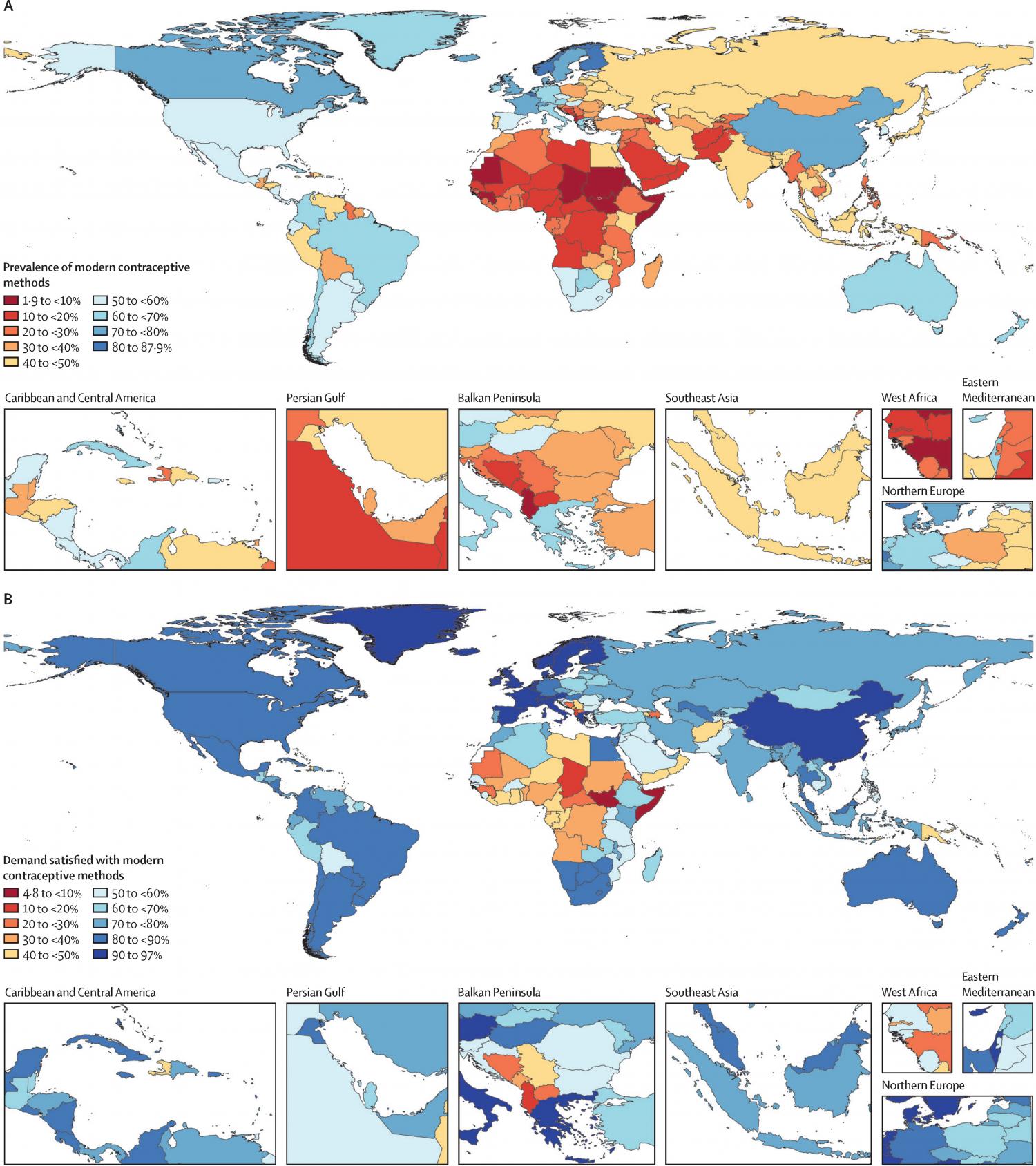
Background: Meeting the contraceptive needs of women of reproductive age is beneficial for the health of women and children, and the economic and social empowerment of women. Higher rates of contraceptive coverage have been linked to the availability of a more diverse range of contraceptive methods. We present estimates of the contraceptive prevalence rate (CPR), modern contraceptive prevalence rate (mCPR), demand satisfied, and the method of contraception used for both partnered and unpartnered women for 5-year age groups in 204 countries and territories between 1970 and 2019. Methods: We used 1162 population-based surveys capturing contraceptive use among women between 1970 and 2019, in which women of reproductive age (15–49 years) self-reported their, or their partner's, current use of contraception for family planning purposes. Spatiotemporal Gaussian process regression was used to generate estimates of the CPR, mCPR, demand satisfied, and method mix by age and marital status. We assessed how age-specific mCPR and demand satisfied changed with the Socio-demographic Index (SDI), a measure of social and economic development, using the meta-regression Bayesian, regularised, trimmed method from the Global Burden of Diseases, Injuries, and Risk Factors Study. Findings: In 2019, 162·9 million (95% uncertainty interval [UI] 155·6–170·2) women had unmet need for contraception, of whom 29·3% (27·9–30·6) resided in sub-Saharan Africa and 27·2% (24·4–30·3) resided in south Asia. Women aged 15–19 years (64·8% [62·9–66·7]) and 20–24 years (71·9% [68·9–74·2]) had the lowest rates of demand satisfied, with 43·2 million (95% UI 39·3–48·0) women aged 15–24 years with unmet need in 2019. The mCPR and demand satisfied among women aged 15–19 years were substantially lower than among women aged 20–49 years at SDI values below 60 (on a 0–100 scale), but began to equalise as SDI increased above 60. Between 1970 and 2019, the global mCPR increased by 20·1 percentage points (95% UI 18·7–21·6). During this time, traditional methods declined as a proportion of all contraceptive methods, whereas the use of implants, injections, female sterilisation, and condoms increased. Method mix differs substantially depending on age and geography, with the share of female sterilisation increasing with age and comprising more than 50% of methods in use in south Asia. In 28 countries, one method was used by more than 50% of users in 2019. Interpretation: The dominance of one contraceptive method in some locations raises the question of whether family planning policies should aim to expand method mix or invest in making existing methods more accessible. Lower rates of demand satisfied among women aged 15–24 years are also concerning because unintended pregnancies before age 25 years can forestall or eliminate education and employment opportunities that lead to social and economic empowerment. Policy makers should strive to tailor family planning programmes to the preferences of the groups with the most need, while maintaining the programmes used by existing users. Funding: Bill & Melinda Gates Foundation.
